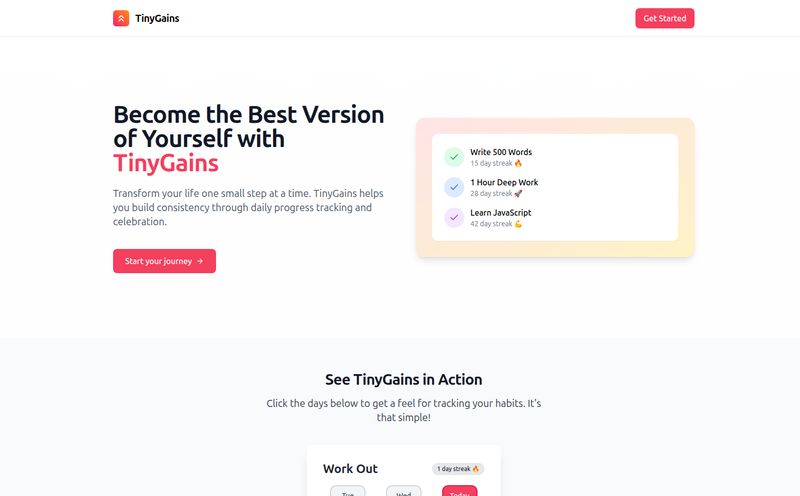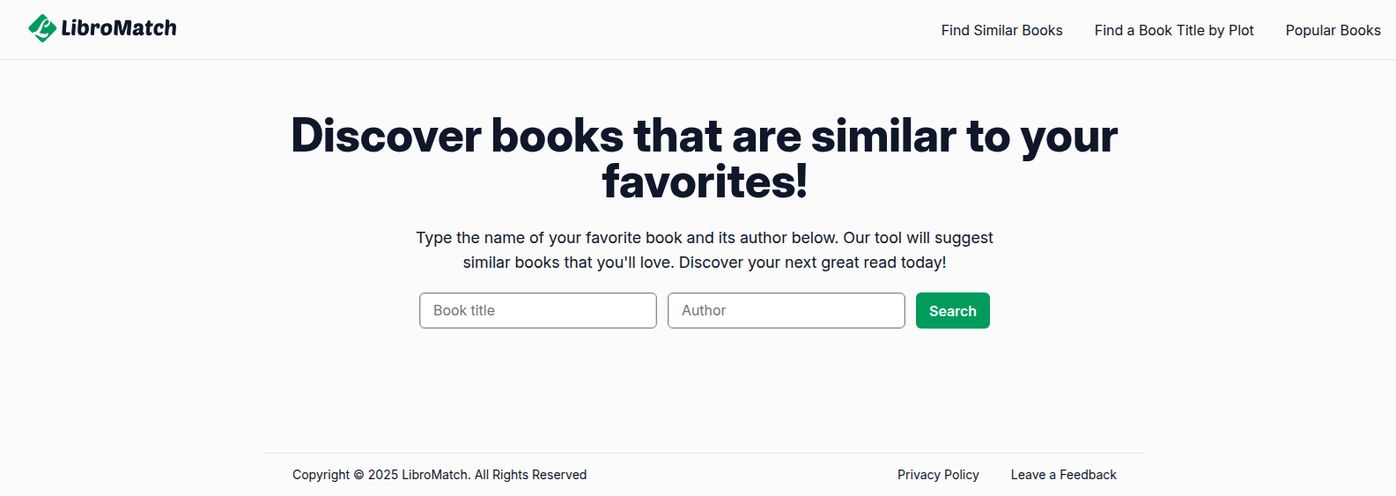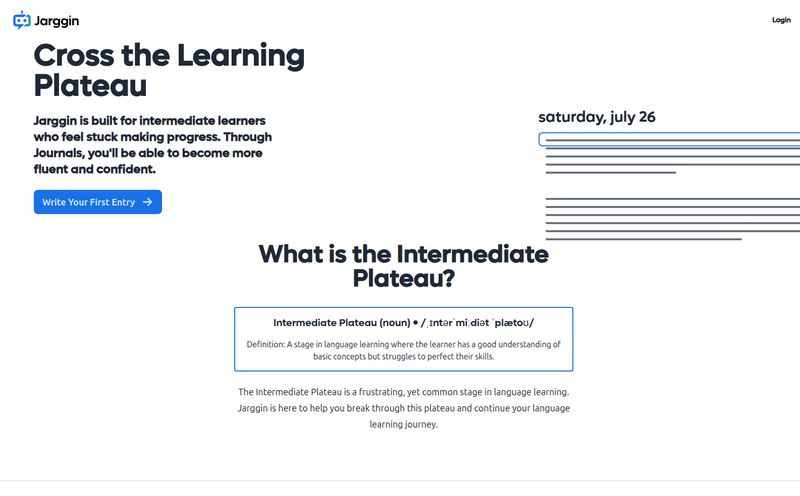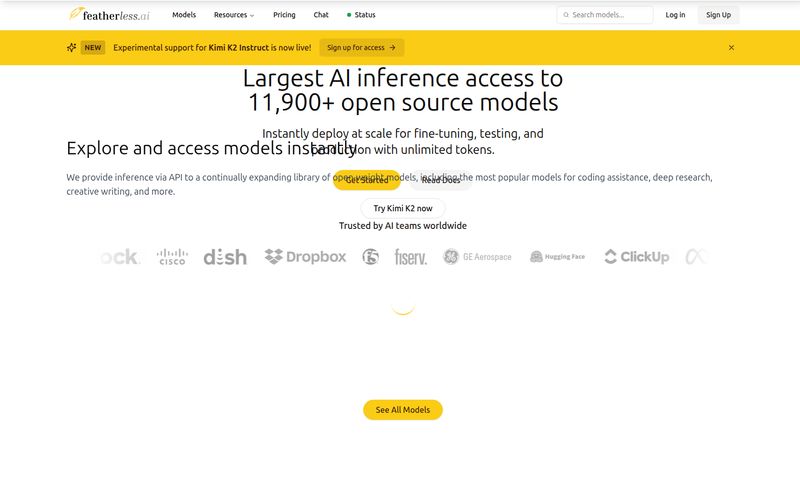We’re all living in the AI gold rush, and every one of us has a powerful tool like ChatGPT or Claude sitting in a browser tab. They’re amazing for drafting emails, brainstorming ideas, or untangling knotty code. But there’s always been this… disconnect. This annoying, manual gap between the AI’s brilliant output and where we actually work.
I’ve lost count of the number of times I've meticulously crafted a prompt, gotten the perfect response, and then started the dreary process of copy-pasting it into Slack, then into a Trello card, then into an email. Each copy-paste feels like a small, sad papercut on my productivity. It’s the digital equivalent of carrying water in a leaky bucket. You get the job done, but geez, it’s messy and inefficient.
We've been promised a future where AI works with us, inside our own tools. And for a while, it felt like a distant dream. That's why when I stumbled upon Runbear, I felt that familiar spark of an SEO nerd who’s just found a new tool to obsess over. It claims to be the bridge over that frustrating gap. A way to get your custom AI agents right into your team’s daily workflow. No coding required. So, does it live up to the hype? I had to find out.
What Exactly is Runbear, Anyway?
Think of Runbear as a universal translator and delivery service for your AI. It’s a platform designed to do one thing really, really well: connect your Large Language Model (LLM) applications to the communication channels your team already uses every single day. We're talking Slack, Microsoft Teams, Discord, and even customer-facing platforms like Zendesk and HubSpot.
You might have built a killer custom GPT through OpenAI, or maybe you're tinkering with a more complex setup using LangChain or Anthropic's Claude. Normally, that creation lives on its own island. Runbear builds the bridges. It lets you take that specialized AI and deploy it as a helpful “agent” or bot within your chats. Suddenly, your custom-built marketing content generator is right there in the #marketing-chat channel, ready for prompts. Your support ticket summarizer can be triggered directly within Zendesk. It’s a simple idea, but the implications are pretty massive.
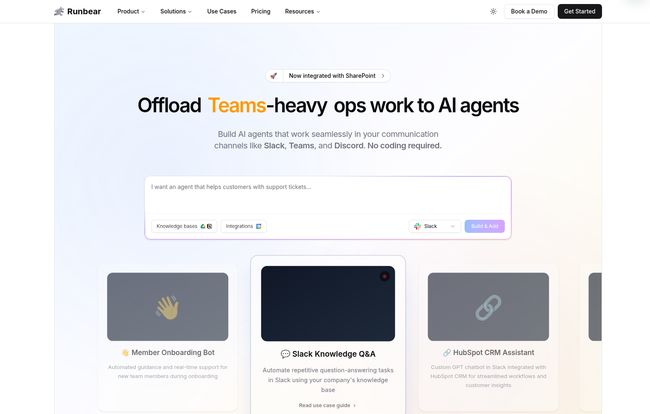
Visit Runbear
The Beautiful Promise of No-Code AI Integration
The whole “no-code” movement is something I’ve been following for years. It’s all about democratizing power. You no longer need a computer science degree to build a website (thanks, Webflow!) or automate a workflow (shoutout to Zapier). Runbear is playing in that same fantastic sandbox. It puts the power of AI integration into the hands of the people who actually need it—the project managers, the support leads, the HR coordinators, and the marketing gurus.
You don't need to bother your already-overworked engineering team to set up a complex API integration just to get a simple AI helper in your Slack. You, the team lead, can just… do it yourself. This is a game-changer for agility. An idea for an AI helper on Monday can be a reality by Tuesday, not a ticket sitting in a backlog for six months. It’s for anyone who's ever thought, “I wish I had a bot for that.”
Putting Runbear to the Test: Key Features I Liked
Okay, so the concept is solid. But what’s it actually like to use? I poked around its features, and a few things really stood out.
Connecting to Your Workflow is a Breeze
Runbear's website boasts you can be “Up & Running in 10 Minutes,” and you know what? They’re not far off. The process of connecting a channel like Slack is incredibly straightforward. It’s the familiar “click to authorize” dance we’ve all done a million times. No wrestling with webhooks or authentication tokens unless you want to. For the average user, it just works. Seeing your custom AI pop up as a new user in your Slack channel for the first time is a genuinely cool moment.
Multi-Agents for Every Department
This is where my inner organization nerd got excited. You aren’t limited to one all-knowing AI overlord. You can create distinct agents for different teams and purposes. Imagine this:
- Onboarding-Bot an HR agent: New hires can ask it questions about company policy, benefits, and first-week tasks, all within a dedicated #new-hires channel.
- Sales-Assist a sales agent: This one lives in the #sales channel and can pull up HubSpot customer data or draft outreach emails on command.
- Content-Bot a marketing agent: A bot in the #marketing-brainstorm channel that can generate blog post ideas, write social media captions, or check grammar.
This compartmentalization is smart. It keeps things clean and ensures the right tools are in the right hands, preventing a single, muddled AI from trying to be everything to everyone.
Connecting Your Company's Brain (Knowledge Sources)
This is the feature that elevates Runbear from a cool gadget to a serious business tool. A generic AI is smart. But an AI that has read your company's entire knowledge base? That’s powerful. Runbear lets you connect your own knowledge sources—think of your internal docs on Confluence, your shared files, or your Notion wikis. This means the AI isn't just pulling from the vast, generic internet; it's providing answers based on your data. It can answer questions with the context of your specific projects, processes, and institutional knowledge. This is how you create an agent that truly acts and sounds like one of your own team members.
Let's Talk About Runbear Pricing (And a Little Confusion)
Alright, lets talk money. SaaS pricing can sometimes feel like trying to nail Jell-O to a wall, and honestly, I found a couple of different versions of Runbear's pricing out there. So, I’m going to share the most detailed one I found, but my advice is to always check their official pricing page for the latest info. Things change fast in this space!
The structure I saw that made the most sense was a tiered system that looks pretty standard for a B2B SaaS tool. Here's a breakdown:
| Plan | Price | Best For | Key Features |
|---|---|---|---|
| Individual | $15 / month | Solo users or testing | 1 agent, 1 user, up to 200 messages/month |
| Team | $119 / month | Small teams collaborating | 5 agents, up to 20 users, 1,000 messages/month, more integrations |
| Business | $319 / month | Growing companies | 10 agents, up to 100 users, 5,000 messages/month |
| Enterprise | Custom Pricing | Large organizations | Unlimited everything, SOC 2, dedicated support |
They also seem to have a free trial, which is always a good sign. It shows a company is confident enough in its product to let you kick the tires before you commit.
But Is It Secure? A Look at Compliance
Here's something that gets glossed over a lot in the rush to adopt new AI tools: security. When you're piping your company's internal communications and knowledge bases through a third-party service, you better be sure they take security seriously. One of the most reassuring things I saw on the Runbear site was the mention of SOC 2 Type II and HIPAA compliance, especially on their enterprise plan. For those not deep in the security weeds, SOC 2 is a huge deal. It's a rigorous, independent audit of a company's systems and processes to ensure they're protecting customer data. It's not just a marketing buzzword; its a hard-earned badge of trust.
Where Could Runbear Stumble?
No tool is perfect, right? From my perspective, the main hurdles are the ones common to many SaaS platforms. The lower-tier plans are quite limited in message volume and the number of agents you can create. If you have an active team, you could burn through the message allowance on the 'Team' plan pretty quickly. You’ll need to do some math to figure out if the efficiency gains are worth the cost of the higher tiers.
And my old pet peeve: “Contact Us” for enterprise pricing. I get it, big deals are complex. But I always appreciate transparency. Still, that’s a minor quibble in the grand scheme of things.
So, What's the Verdict?
After spending some time with the concept and features, I'm genuinely optimistic about tools like Runbear. It’s not trying to be another AI model. Instead, it’s a crucial automation layer that makes the AI tools you already use infinitely more practical. It solves a real, tangible problem: the gap between AI potential and workflow reality.
If your team is constantly bogged down by repetitive questions, manual data lookups, or the endless copy-paste grind, then yes, Runbear is absolutely worth a serious look. It's about buying back time and mental energy for your team to focus on the work that actually matters. And in today's world, that’s just about the best return on investment you can ask for.
Frequently Asked Questions
- Do I need to know how to code to use Runbear?
- Absolutely not. That's its main selling point! Runbear is a no-code platform, designed for non-technical users to set up and manage AI agents through a simple interface.
- What AI models can I connect with Runbear?
- Runbear supports a wide range of popular LLM app builders and frameworks. This includes OpenAI's models (like the ones used for custom GPTs), Anthropic's Claude, and frameworks like LangChain, allowing for a ton of flexibility.
- Is Runbear secure for sensitive company data?
- For businesses with high-security needs, this is a critical question. Runbear offers SOC 2 Type II and HIPAA compliance on its Enterprise plan, which are strong indicators of a secure and well-managed platform.
- Can I try Runbear before paying?
- Yes, it appears they offer a 7-day free trial on their paid plans. This allows you to test out the features and see if it's a good fit for your team's workflow before making a financial commitment.
- How is Runbear different from the official ChatGPT app in Slack?
- That’s a great question. The official ChatGPT app is great for general queries. Runbear is different because it allows you to deploy your own custom-built AI agents. More importantly, it lets you connect them to your company's private knowledge sources, so the AI can provide answers based on your internal data, not just public internet information.
Reference and Sources
- Runbear Official Website: https://www.runbear.io/
- Runbear Pricing Page: https://www.runbear.io/pricing
